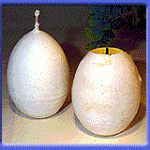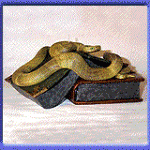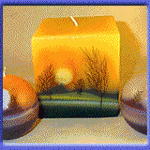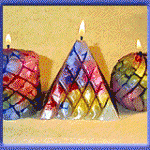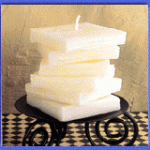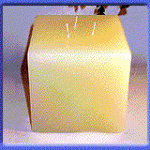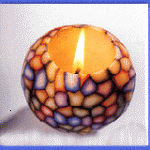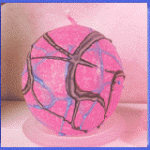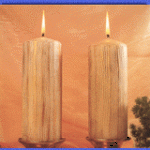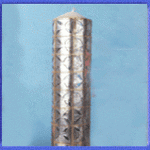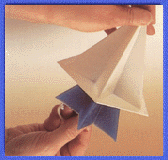Candle making is a safe and enjoyable craft, but you should observe the following guidelines:
Never overheat wax If was is heated above 100°c (212°f) it will ignite:
So:-
- Never leave heating wax unattended that means NEVER so make sure that you will have have to leave the rookm whilst candlemaking. If you have to leave the room TURN OFF THE HEAT SOURCE first.
- Whenever possible us a double boiler, thermostatically controlled chip fryer or a metal bowl over hot water. If you do this is cannot overheat.
- If you do heat wax directly over your source of heat use a thermometer. When reading the wax’s temperature ensure that you have gently stirred the wax and leave the thermometer in until it stops moving so that you know you you are getting a true reading. Remember at 100°c (212°f) it will ignite:
- Do not move your hot container of wax. always work buy bringing your pouring jug to the double boiler or water and leadelling the wax out. If you move the wax it could spill and burn you.
To put out a wax fire Never use water. Wax acts like a chip pan fire and the fire will spreads if you use water. You should:
- Switch off your heat source immediately
- Smother the flames with a damp cloth, saucepan lid or fire blanket. Make sure you leave plenty of time for the wax to cool BEFORE removing your lid damp cloth or fire blanket. If you taker it off too soon the wax may well re-ignite.
Make sure that your work area is organised and that you have to move your molten wax as short a distance as possible. Always have a damp cloth or fire blanket at hand.
If you do have a fire try and avoid breathing in the smoke. If you have a minor burn run it under cold water. If more serious seek medical help.
You should:
- Switch off your heat source immediately
- Smother the flames with a damp cloth, saucepan lid or fire blanket. Make sure you leave plenty of time for the wax to cool BEFORE removing your lid damp cloth or fire blanket. If you taker it off too soon the wax may well re-ignite.
Protect your work surfaces Wax will scrape off most surfaces, but the dye may stain. Use baking trays underneath your prepared moulds so that any leaking wax will be safely contained, and the odd drips you have can then be recycled. It is also a good idea to protect the whole area with old newspaper.
Molten wax Remember that molten wax always hardens when it cools down! Make sure that you always have a plug in you sink – molten wax will plug the drain if the wax goes down it.
Burning Candles – Saftey
- Always put candles on a heat resistant surface. Be especially careful with night lights and tea lights, which get hot enough to melt plastic. TVs are not fire-resistant objects.
- Put them in a proper holder. Candles need to be held firmly upright by the holder so they won’t fall over. The holder needs to be stable too, so it won’t fall over either.
- Position them away from curtains. Don’t put candles near curtains or other fabrics – or furniture. And keep them out of draughts.
- Don’t put them under shelves. It’s easy to forget that there’s a lot of heat above a burning candle. If you put it under a shelf or other surface then it can burn the surface. Make sure there’s at least three feet (one metre) between a candle and any surface above it.
- Keep clothes and hair away. If there’s any chance you could lean across a candle and forget it’s there, put it somewhere else. You don’t want to set fire to your clothes or your hair.
- Keep children and pets away. Candles should be out of reach of children and pets.
- Keep candles apart. Leave at least four inches (10cm) between two burning candles.
- Take care with votive or scented candles. These kinds of candles turn to liquid to release their fragrance, so put them in a glass or metal holder.
- Don’t move them when they’re burning. Extinguish candles before moving them. Also, don’t let anything fall into the hot wax like match sticks.
- Don’t leave them burning. Extinguish candles before you leave a room. Never go to sleep with a candle still burning. And never leave a burning candle or oil burner in a child’s bedroom.
- Use a snuffer or a spoon to put them out. It’s safer than blowing them, which can send sparks and hot wax flying.
- Double-check they’re out. Candles that have been put out can go on smouldering and start a fire. Make sure they’re completely out.



